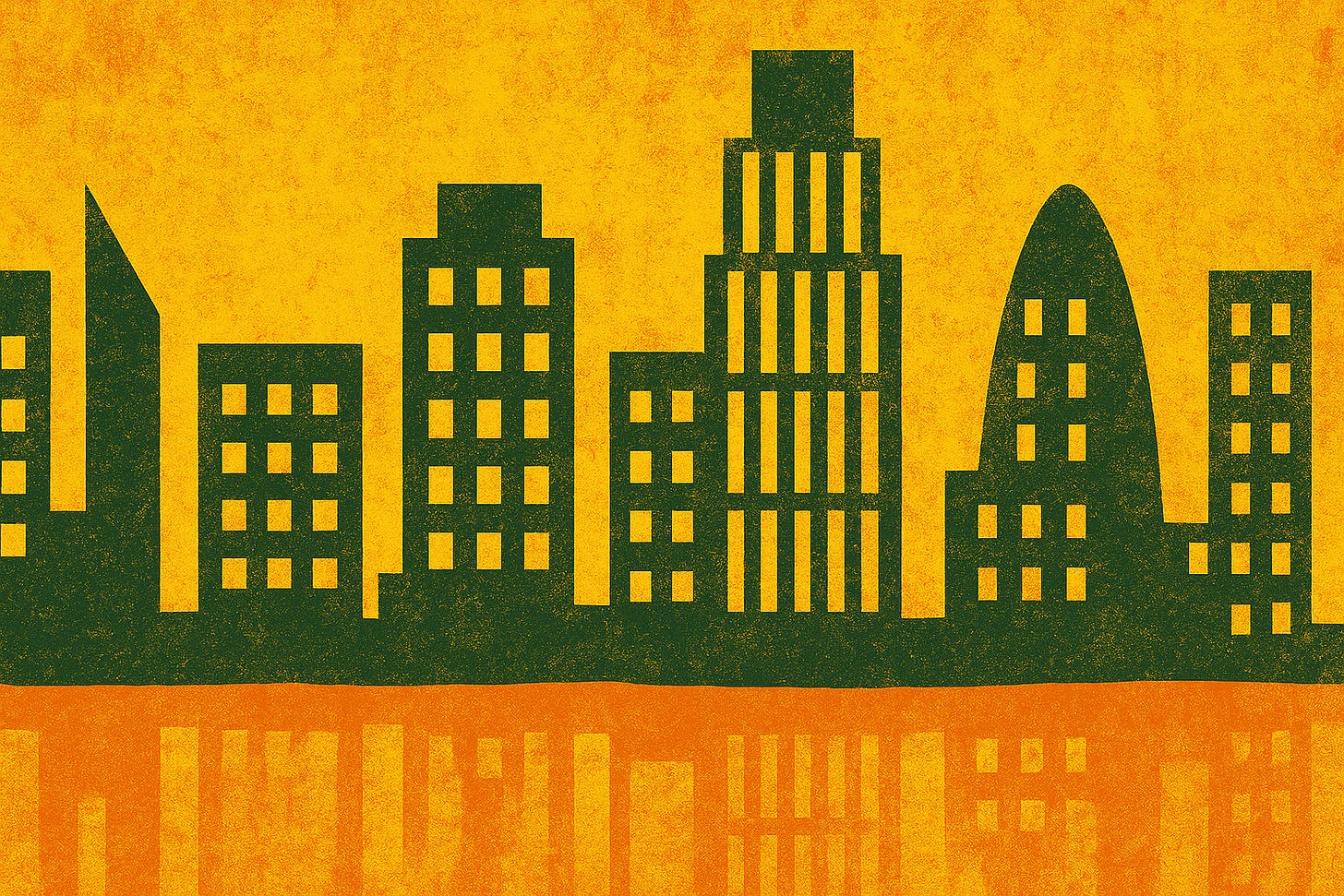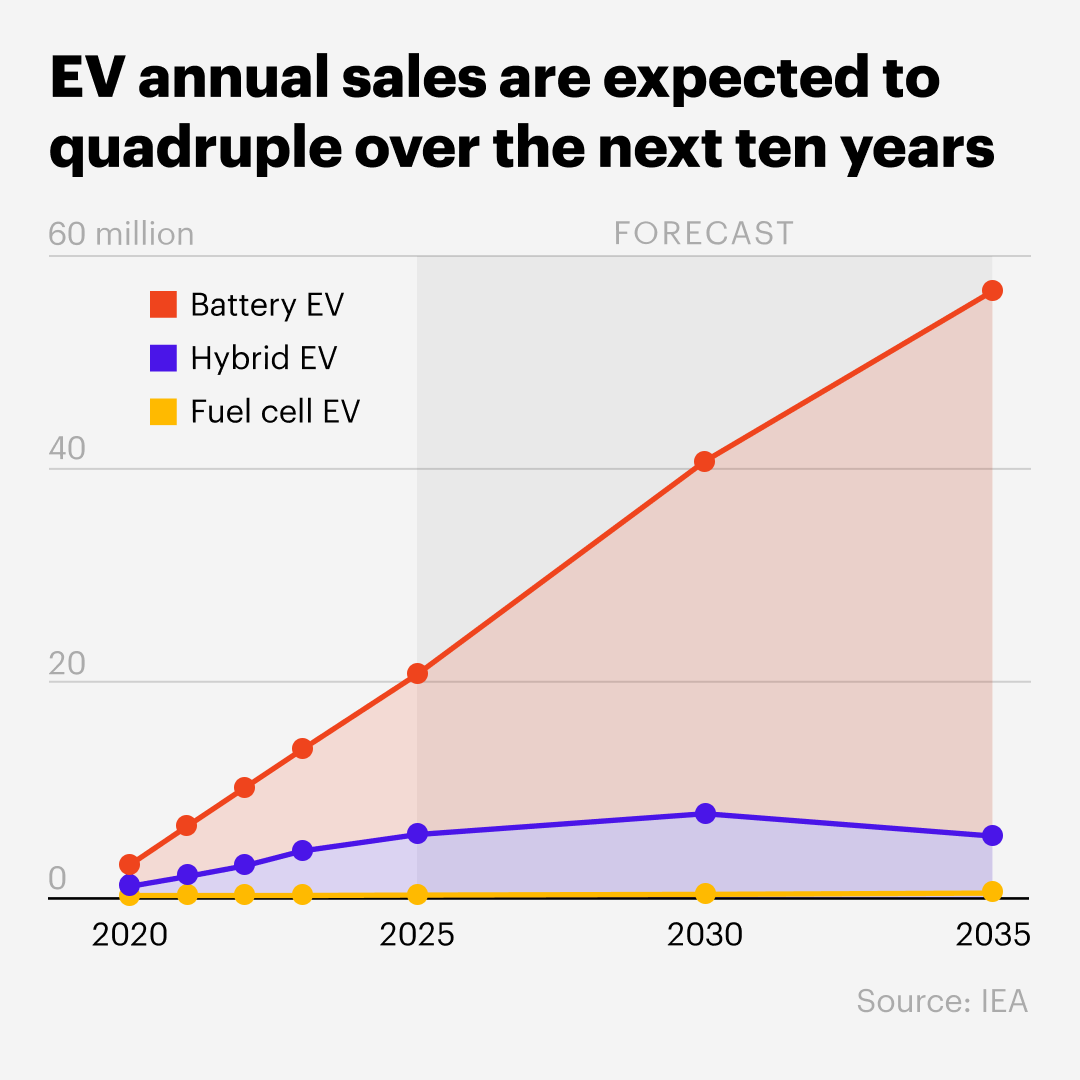🌆 30 things I learned from a year of covering urban sustainability
Hey folks! Over the past year, working as editor-in-chief of Urbi Atlas, I’ve discovered more than a few surprising facts about how cities work and how they could work better. This newsletter pulls together some of the most memorable insights from our recent features, from the hidden impact of building height to the cooling power of trees and the strange invisibility of LED lights from space.
By the way, one of our features has been shortlisted for the Information is Beautiful Awards. Please head to the shortlist page and click the vote button on our entry to support us — it will mean a lot!
The hidden cost of height
In High Expectations, we looked at how building height affects urban sustainability:
In Dubai, over 90% of buildings are just one or two storeys high. In Paris, six-storey blocks dominate the skyline.
By 2050, two-thirds of humanity will reside in cities.
Cities pump out about 70% of all human-made greenhouse gases — carbon dioxide, methane, nitrous oxide, etc.
Doubling a city’s average building height boosts capacity by 16% and cuts land use by 19%.
Yet, energy use climbs with height: a 20-storey office consumes nearly 2.5 times more electricity per square metre than a six-storey one.
Taller buildings burn more gas too — about 40% more — doubling emissions compared to mid-rise blocks.
Want to build dense and green? Go wide, not high. Low-rise, high-density neighbourhoods emit less than towering districts.
The road to sustainable transport
In Moving Forward, we explored how cities are rethinking transport to cut emissions:
Cars worsen urban air and pump out 5.87 billion tonnes of CO₂ a year — 15% of global emissions.
Globally, there’s one car for every six people. In Dubai, it’s one for every two.
In 2023, nearly 14 million new electric cars hit the road, pushing the total to 40 million. That’s 250,000 new EVs every week, more than the total sold in 2013.
Since 2015, the average EV range has increased by nearly 75%.
In real life, though, range drops fast: up to 50% in cold weather, 25% at high speed, and 15% in hot climates due to AC use.
To stay on track for climate goals, global public transport capacity must double by 2030.
Dubai’s Green Spine aims to convert a 64-km highway into a solar-powered tram corridor, cutting emissions and reducing car dependency.
The power of urban parks
In Green Giants, we looked at how heat hits urban areas and what works to bring temperatures down:
In 2022, 80% of cities faced serious climate threats, from extreme heat to flooding.
Dense urban areas are often cooler than bare land. Shade from buildings reflects sunlight, while open ground traps and holds heat.
Green space in the UAE grew from 40.7 km² in 1975 to 1,741.3 km² in 2020—a 43-fold increase.
Botanical gardens can cool the air by 5°C on average; street trees by 3.8°C. Bigger parks cool more, and linking them makes cities even cooler.
Just a 10% boost in vegetation can cut local temperatures by 2°C.
The shaded city
In Seeking Shadow, we explored how something as simple as shelter from the sun can transform urban life:
Standing in the shade can feel 10–20°C cooler than standing in direct sun.
Productivity in the shade is over 80% higher than in the sun.
In Dubai, shaded streets reduce ground temperatures by 9–15°C. With access to AC at both ends, people can handle short walks in 43–47°C heat.
Dubai’s upcoming 93-km project, The Loop, will offer shaded paths for walking and cycling, linking neighbourhoods by 2040 and cutting reliance on cars.
A new mosque in Dubai, designed by Sumaya Dabbagh, uses a perforated canopy to cool a shaded courtyard, guiding worshippers through the heat with comfort.
Cities in a new light
In Bright Spots, we explored how LED technology transforms urban visibility, energy use, and emissions:
Satellite sensors often miss LED-lit areas. Designed for the orange glow of sodium lamps, they struggle to detect the blue-heavy spectrum of LEDs.
Lighting eats up 20–40% of a city’s electricity. Switching to LEDs can slash those costs by 30–50%.
LEDs are 5 to 30 times more efficient than traditional lamps, using just 6–12 watts vs. 50–450 watts.
LEDs also last much longer: 25,000 to 50,000 hours compared to 1,000–2,000 hours for sodium lamps.
A global switch to LEDs could cut CO₂ emissions by at least 490 million tonnes a year — the same as taking 140 million cars off the road.
When a Saudi racetrack swapped in LEDs, it cut lighting energy use by 40%.
(For more facts, visuals, and source links, check out the full features on Urbi Atlas.)
What I’ve been reading
New digital replica will allow films to be set within Auschwitz: “The Auschwitz Memorial has launched a ‘historically accurate’ digital replica of the former concentration camp for filmmakers to set their pictures in, breaking a long-held taboo around shooting features.”
China’s first police corgi has 400,000 followers and a nose for trouble: “His short legs have actually become an advantage, allowing him to perform tasks that larger dogs can’t.”
The professors are using ChatGPT, and some students aren’t happy about it: “In a national survey of more than 1,800 higher-education instructors last year, 18 per cent described themselves as frequent users of generative A.I. tools; in a repeat survey this year, that percentage nearly doubled.”
From the archives
That’s it for today! Thanks for reading! If you enjoy the newsletter, share it with a friend — or a dozen. And if you really enjoyed it, consider upgrading to a paid subscription: it helps support my work and means a lot.
Elia Kabanov is a science writer covering the past, present and future of technology (@metkere)
Illustration: Elia Kabanov feat. DALL-E.







